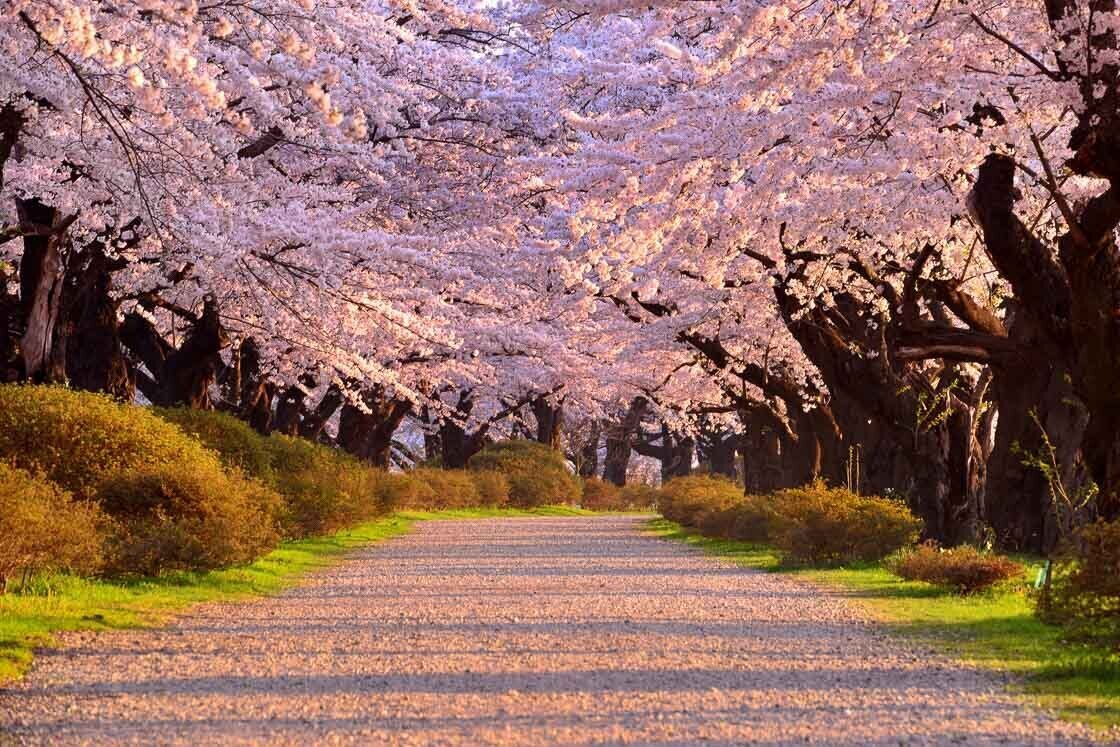Touring cherry blossoms with the Tohoku Shinkansen
As spring rolls through Japan, cherry blossom trees erupt in all shades of pink in a wave from south to north. In the Tohoku region of northern Japan, the colder weather causes sakura to bloom slightly later than in the warmer parts of the country. Visiting these late-blooming sakura is one way to beat the heavy crowds of sakura season in places like Tokyo. For those planning to visit Japan during the 2025 Easter holiday but still want to see the sakura in bloom, Tohoku is the perfect destination. Whereas the sakura in the south will have already dropped all their blossoms, the cherry blossoms in Tohoku are forecast to be in full bloom in late April.
Picnic under the beautiful pink blossoms and enjoy hanami, or flower viewing, in this pre-crafted Tohoku itinerary, which will take you to Iwate and Akita Prefectures. Access from Tokyo is easy with the shinkansen. We recommend visitors purchase a JR EAST PASS (Tohoku area) for unlimited use of the JR East lines and the Tohoku shinkansen for five consecutive days. For those who plan to travel to other parts of Japan as well, the JAPAN RAIL PASS offers unlimited access to all JR lines and multiple shinkansen routes, allowing travelers to visit cities like Osaka and Kyoto in addition to the Tohoku area.
Day 1: Iwate
Board the Tohoku shinkansen for Morioka at Tokyo Station. The Tohoku shinkansen trains are part of the E5 and E6 series, and reach speeds of up to 320 kilometers per hour. The Hayabusa train of the Tohoku shinkansen reaches Kitakami in about two and a half hours.
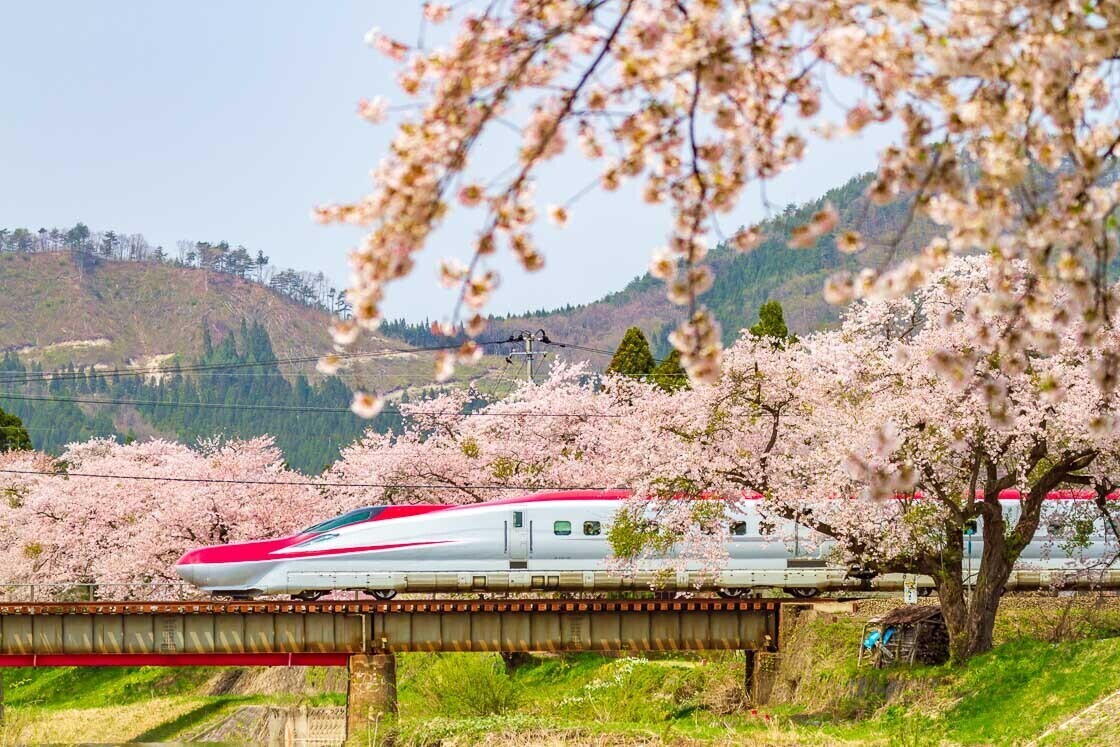
Get off at Kitakami station and take a 7-minute taxi ride to Kitakami Tenshochi Park. There are about 10,000 sakura trees in the park, many of which line a walking path that follows the Kitakami River. The Kitakami Tenshochi Sakura Festival is held in the park throughout April. During the festival, many people picnic under the sakura blossoms, a traditional recreation known as hanami. Visitors can also take in the thousands of cherry blossoms by riding a horse-drawn wagon down the main walking path or boarding a boat that takes you up and down the Kitakami River. At night, the sakura trees are illuminated to allow flower viewing regardless of the time of day. You can also visit the nearby Michinoku Folklore Village, which preserves various artifacts and around 40 historic homes built in the Edo period (1603-1867).
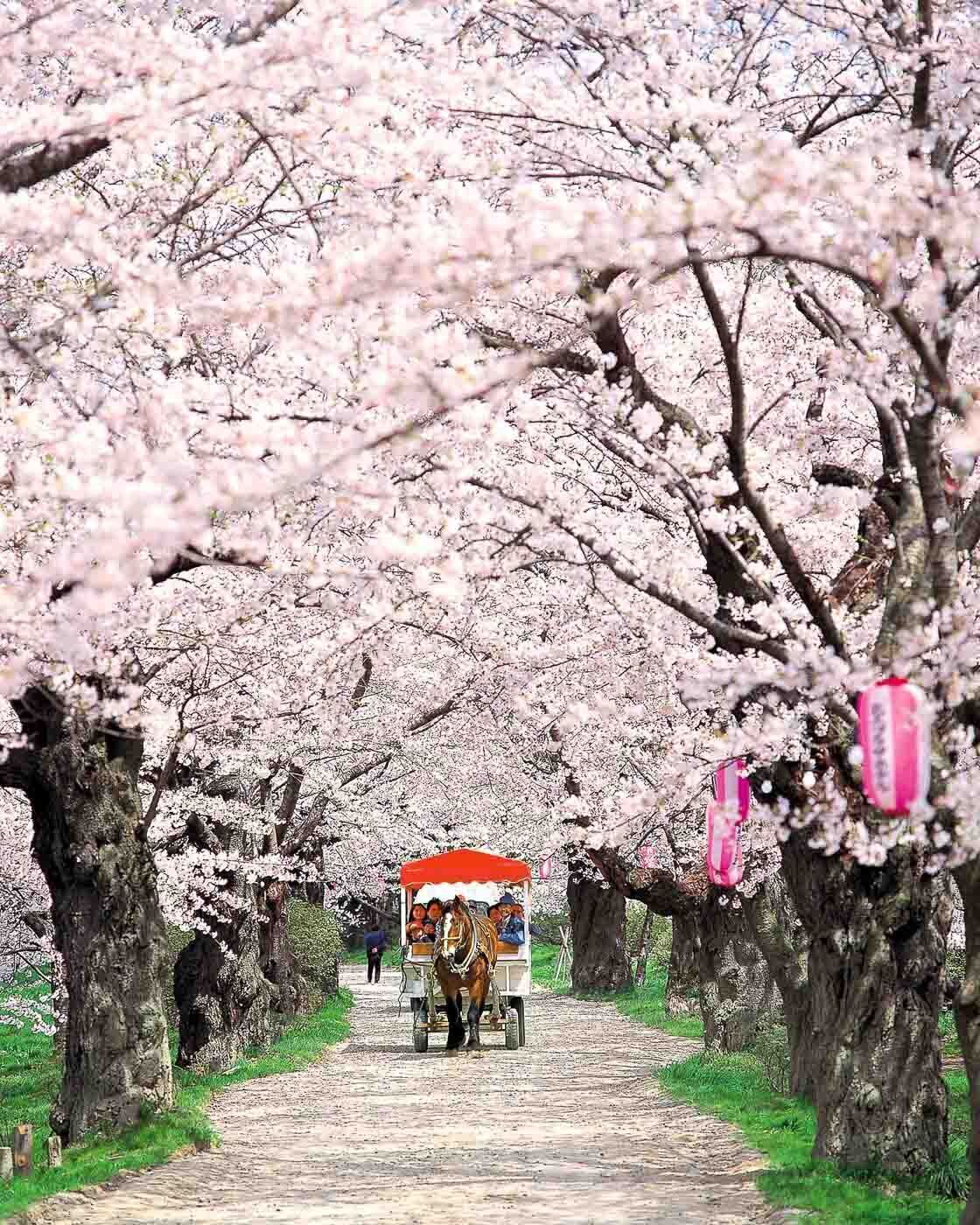
After you've enjoyed the sights of Kitakami, head back to Kitakami Station and take the Tohoku shinkansen for approximately 20 minutes to reach Morioka, the capital of Iwate Prefecture. Ranked second on the New York Times' list "52 Places to Go in 2023", Morioka is famous for its specialty noodle dishes, such as jajamen, a type of thin udon noodle served with a scoop of meat miso and vegetables, and reimen, a cold noodle served in chilled broth and topped with kimchi and other toppings. For lunch, stop by one of the many restaurants selling these local favorites in the vicinity of Morioka Station.
After lunch, walk about 15 minutes to Morioka Castle Ruins Park, which is blanketed by around 250 sakura trees. During the Morioka Sakura Festival in April, the cherry blossom trees are complemented by the soft light of traditional bonbori lanterns, allowing for nighttime sakura viewing. As its name implies, the park is also home to the remains of Morioka Castle, which was constructed in 1633 as the seat of power of the Nanbu family. Sections of the original castle walls still survive and are an excellent example of the flawless stone foundations of medieval castle architecture.
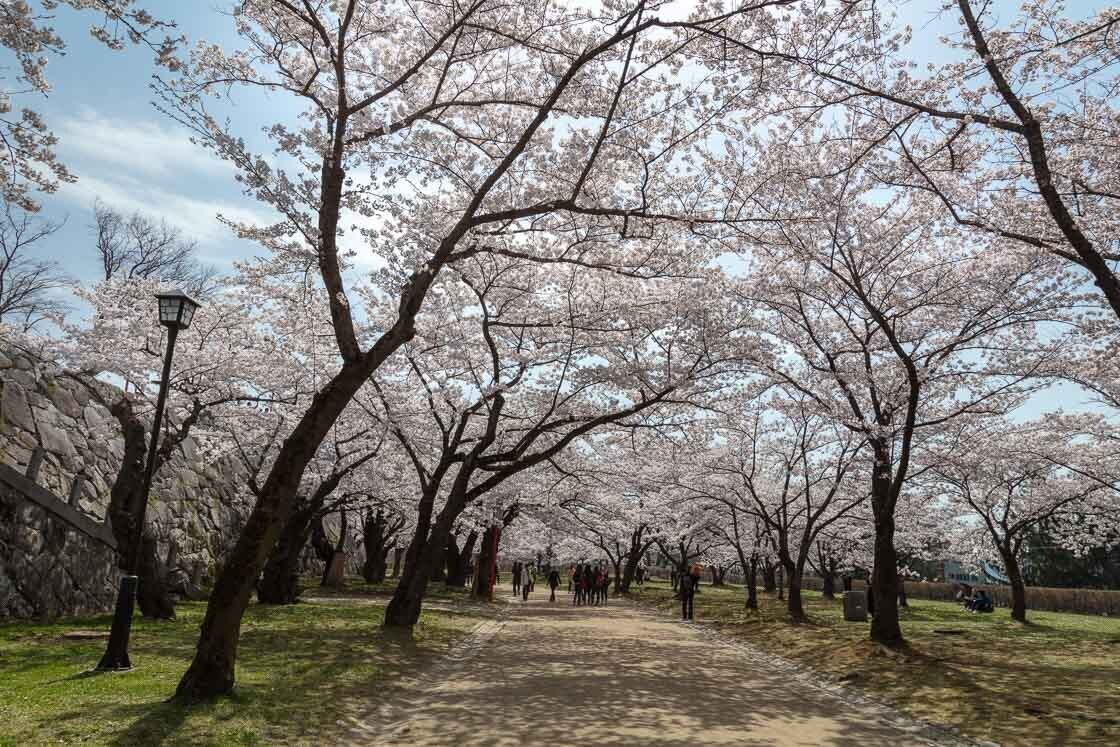
Next, head to Takamatsu Park, which can be reached by a 20-minute bus ride. For those who'd like to explore the area by foot, the walk to the park takes approximately 40 minutes. Over 1,000 sakura trees surround the park's pond, and visitors can enjoy a clear view of Mt. Iwate, the largest mountain in the prefecture.

For dinner, try Morioka's unique specialty: wanko soba. Unlike Morioka jajamen and reimen, which incorporate Chinese and Korean flavors to create distinct local dishes, wanko soba is a take on traditional Japanese cuisine - but with a twist: its amusing all-you-can-eat dining style. You are served a tray with a variety of yakumi condiments and toppings and a bowl with soba broth. When you raise your bowl, a server will drop soba noodles into your bowl with the hearty call "hai, dondon". The first bowl of soba should be enjoyed without any toppings to appreciate the noodles' underlying flavor. When you're ready for more, raise your bowl again, and a server will refill your bowl. Each serving of soba is small and is meant to be eaten in a single mouthful. Fifteen bowls of wanko soba is equivalent to one ordinary serving of soba. You are free to refill your bowl until you become full.
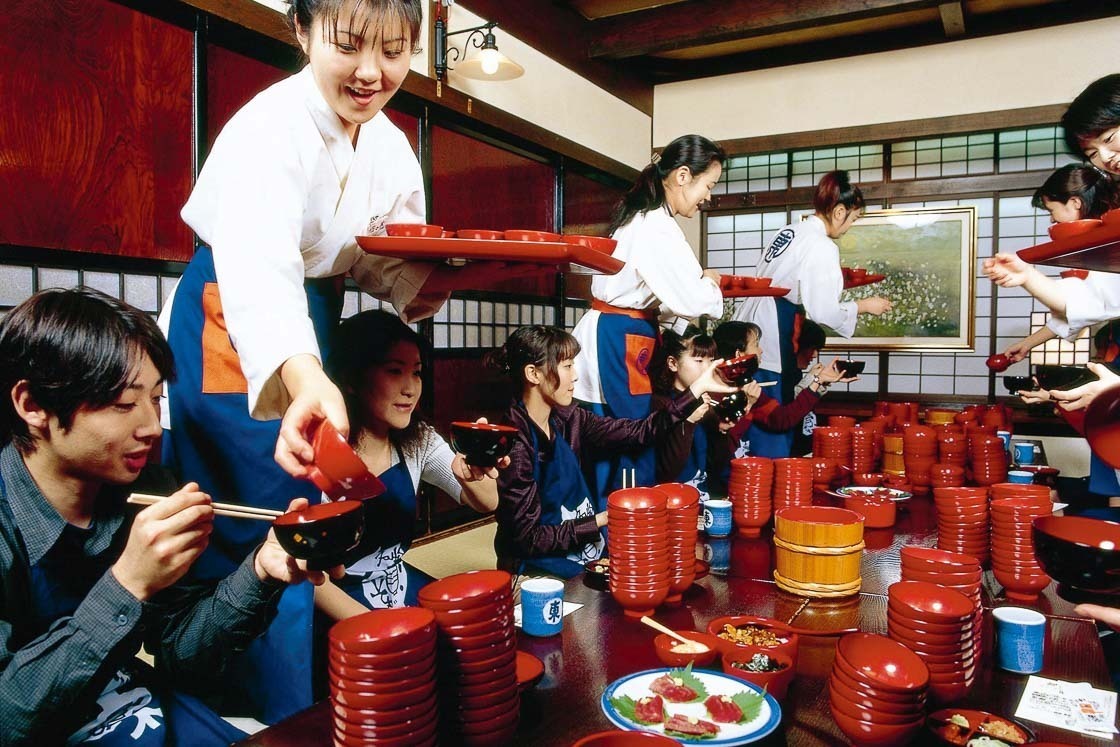
Finally, unwind in your hotel room at Hotel Metropolitan Morioka for the night.
Day 2: Iwate and Akita
To start off your second day of travel, head to Koiwai Farm about 12 kilometers west of Morioka. At Morioka Station, take the number 10 bus for about 35 minutes to Koiwai Farm Makibaen. The farm was made famous when the celebrated author Miyazawa Kenji made it the subject of one of his poems. Today, the farm offers a variety of participatory experiences with farm animals, guided tours, and opportunities to eat high quality meals made with ingredients produced on the farm.
Koiwai Farm also possesses a special springtime view: a lone sakura tree standing in a field of expansive green against an impressive view of the snowy ridges of Mt. Iwate. The large sakura tree was planted around 100 years ago and its large branches spread pale pink blossoms across the sky.
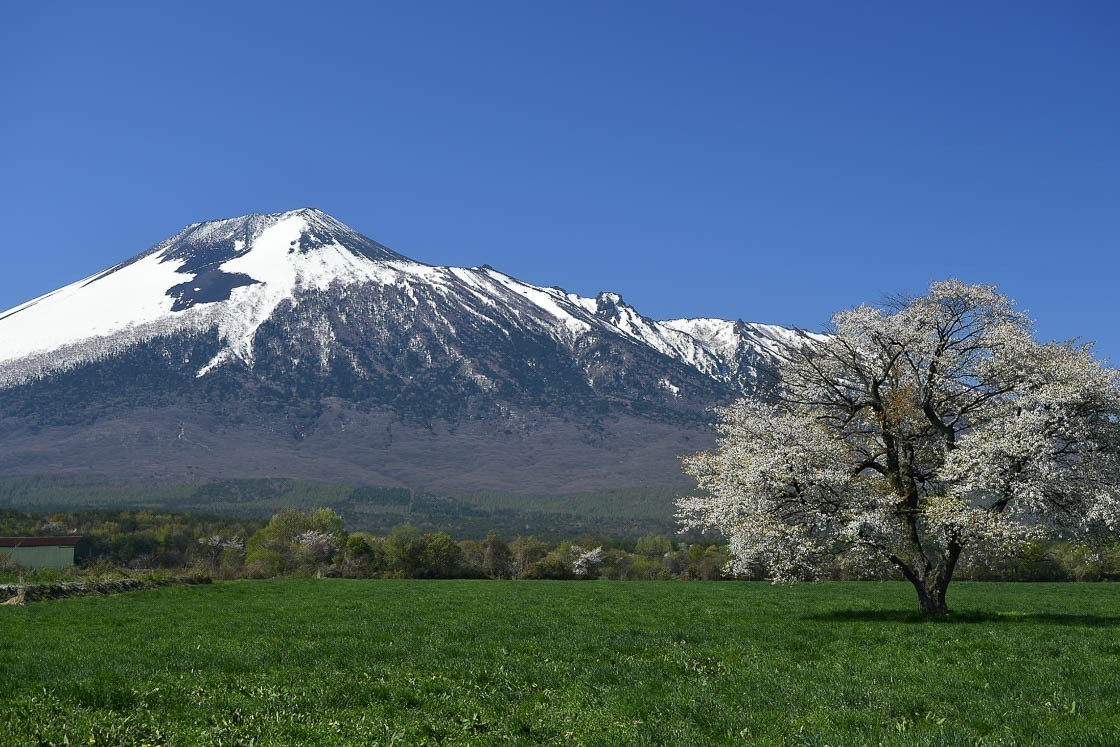
After you finish exploring Koiwai Farm, take the Koiwai Farm bus line from Koiwai Farm Makibaen to Morioka Station. From Morioka Station board the Akita Shinkansen for Kakunodate Station. Kakunodate is a former castle town in Akita Prefecture famous for its historic landscapes that date to the seventeenth century. Try some inaniwa udon, an Akita specialty, for lunch. Inaniwa udon is a popular regional variety of udon and is known for its thin noodles made entirely by hand.
Once you've had your fill of inaniwa udon, head to Kakunodate's most notable site: Bukeyashiki-dori Street. This street is lined with historic samurai houses from the Edo period. The high social status of the samurai is reflected in the magnificent construction of the homes. The street is also lined with weeping cherry blossom trees that drop waterfalls of pink flowers between the impressive historic homes. Spotlights illuminate the sakura trees at night, allowing visitors to enjoy the brilliant cherry blossoms and the traditional townscape around the clock.
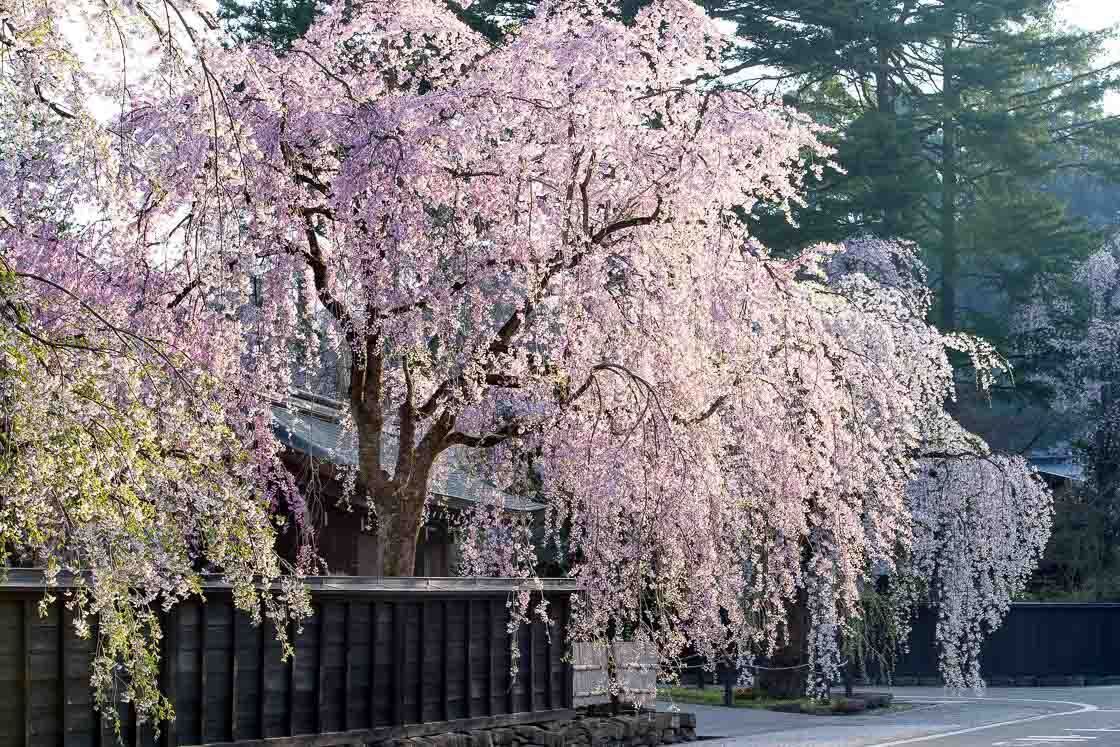
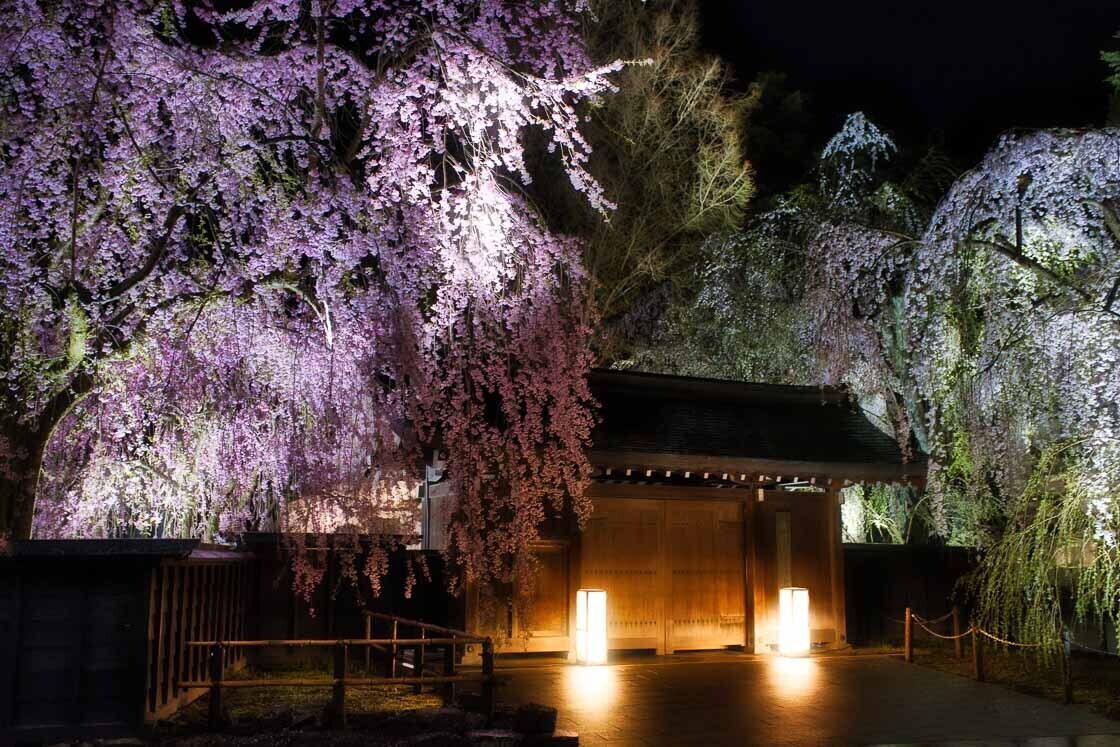
Next, head a couple of streets down from Bukeyashiki-dori Street toward the Hinokinai River. Stroll under the approximately 400 sakura trees that create a two kilometer tunnel of flowers along the banks of the river. The sakura trees drop wispy petals onto the footpath and the rushing water in a fluttering shower.
Finish the day with some hinaijidori chicken, a type of chicken that has been bred in Akita for centuries and is known for its rich, delicious flavor. It is commonly served as oyakodon, or chicken and egg served over rice. Spend the night at wanoi KAKUNODATE, a luxury hotel that was originally a traditional warehouse from the early twentieth century with authentic wooden interiors.
Day 3: Lake Tazawa
For your last day, relax at Lake Tazawa, the deepest lake in Japan. It is located only about 20 minutes away from Kakunodate and can be reached on the Tazawako Line from Kakunodate Station. A bus loops around the lake, stopping at various spots along the shore, such as the Statue of Tatsuko, a golden statue of a young woman from a local legend who is said to have been transformed into a dragon and sunk into the bottom of the lake for vanity, and Goza no Ishi Shrine, which features a picturesque torii gate on the edge of the lake's waters. You can also join a sightseeing boat tour, which includes explanations of the lake's history. For recreation, enjoy paddleboarding or rent a bicycle to circle the lake.
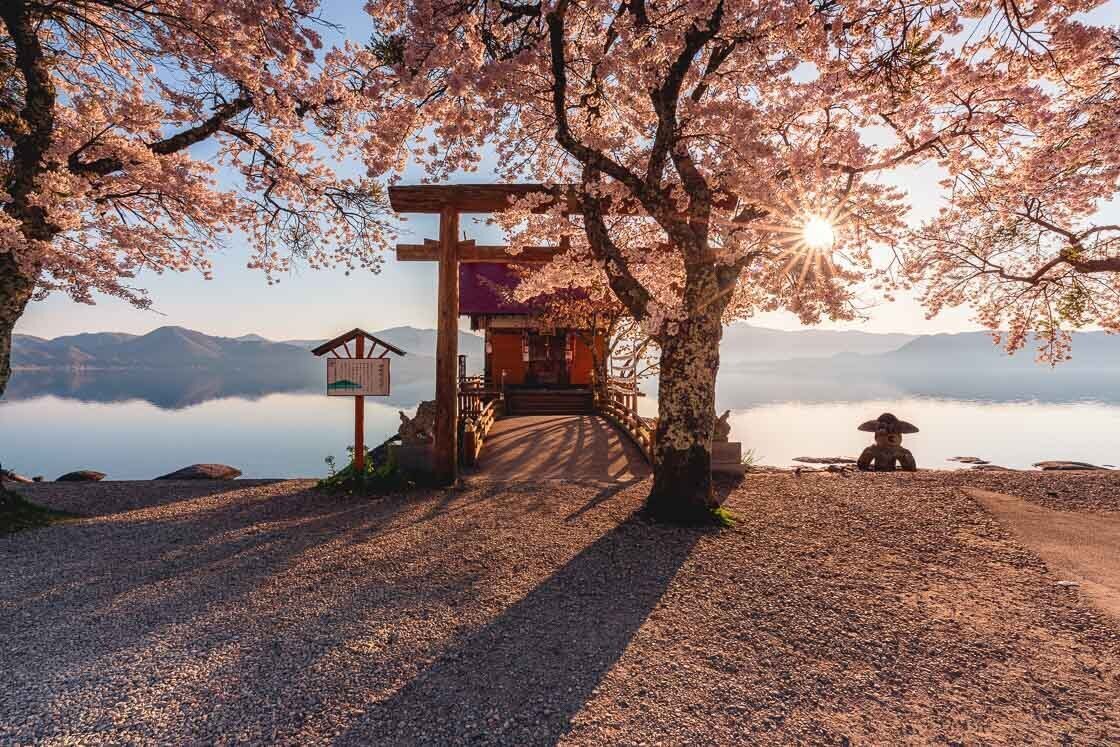
After enjoying scenic Lake Tazawa, finally, your Tohoku tour will come to an end, and the time will come to return to Tokyo. The Akita Shinkansen's Komachi train will take you from Tazawako Station straight to Tokyo in a little under three hours.
Conclusion
Japan's Tohoku region is full of enchanting hidden gems and offers the opportunity to enjoy swathes of bursting cherry blossoms when most sakura elsewhere have already dropped their petals. Take advantage of the thinner crowds of the off season to explore Tohoku at your own pace and enjoy its many regional culinary treats.
For additional information, visit JR East's official page about sakura in Tohoku.
Discover more
- JR EAST PASS (Tohoku area) - Official website.
- JAPAN RAIL PASS - Official website.
- Cherry blossoms in the Tohoku Region - Official page about sakura in the Tohoku Region.
- wanoi KAKUNODATE - Official website.
